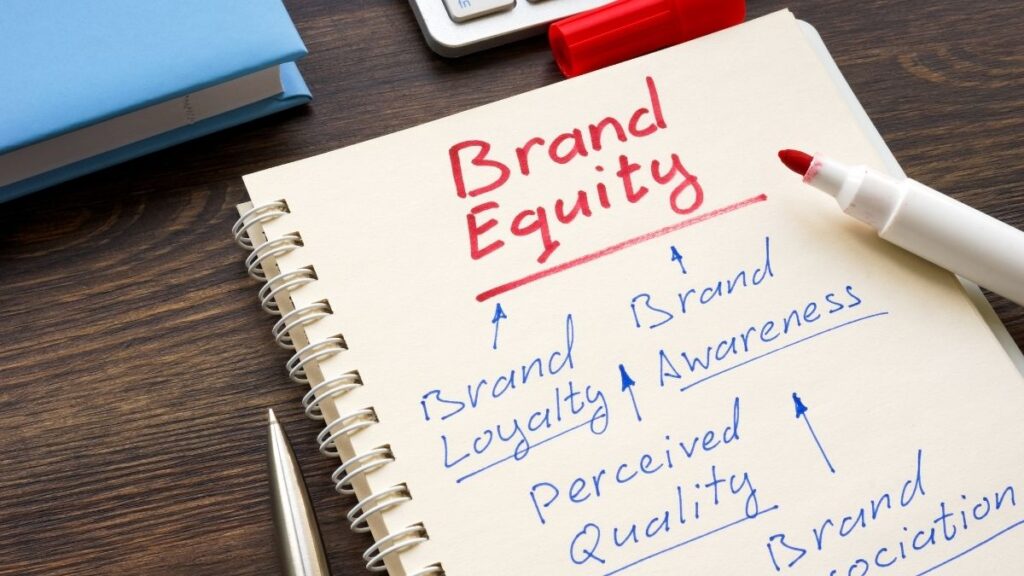
The modern millionaire is one of the most misunderstood figures in the financial landscape. Popular culture often paints a picture of inherited fortunes, extravagant lifestyles, and seven-figure salaries. Yet, a rigorous examination of data reveals a starkly different reality, one that is far more attainable than commonly believed. The path to wealth is not paved with lottery wins or trust funds; it is systematically built through the disciplined acquisition of income-producing assets.
An analysis of the affluent in the United States dismantles the most pervasive myths about wealth creation. A staggering 79% of American millionaires did not receive any inheritance, and a mere 3% inherited $1 million or more. This single fact reframes the conversation from one of privilege to one of process. Furthermore, the notion that wealth is a direct result of a high-paying job is also a misconception. Data reveals that only 31% of millionaires averaged an annual salary of $100,000 over the course of their careers, and a full one-third never reached a six-figure income in any single year. Instead, 93% attribute their financial success to hard work and consistent, long-term investing, not high salaries.
Income Stream #1 – Equity: The Foundation of Compounding Wealth

Why Owning Stocks is the Most Democratic Path to Becoming a Millionaire
The most accessible and foundational income stream for aspiring millionaires is the ownership of equities. This is not about speculative day-trading or chasing volatile trends; it is about the disciplined, long-term ownership of a diversified portfolio of the world’s leading businesses. The data is unequivocal: a vast majority of millionaires use the stock market as a primary engine for wealth creation. Fully 75% of millionaires credit their financial success to consistent, long-term investing, and 80% have diligently utilized their company’s 401(k) plan—a tax-advantaged vehicle for equity ownership. Further analysis shows that nearly half (47%) of all millionaires actively own stocks, with the average value of their portfolios approaching $950,000. This behavior is not an ancillary part of their strategy; it is the bedrock upon which their fortunes are built.
The intellectual guide for this approach is Warren Buffett, whose philosophy emphasizes patience, simplicity, and a long-term perspective. His principles serve as a powerful antidote to the short-term noise and volatility that deter many novice investors. Buffett’s wisdom underscores that successful investing is a matter of temperament, not intellect. He famously stated, “Our favorite holding period is forever,” and “The stock market is a device for transferring money from the impatient to the patient”. This mindset is crucial because it aligns the investor’s timeline with the natural growth trajectory of the economy.
The Blueprint: Your First Steps to Market Ownership
Your Blueprint to Market Ownership!
Taxable or Retirement (IRA)
Low fees, broad diversification.
Dollar-cost average, stay consistent.
Long-term wealth building.
Building this foundational income stream is a straightforward process that can be initiated in minutes and automated for a lifetime.
Step 1: Open the Right Account
The first step is to open an investment account, which serves as the container for the assets. This can be done online with a reputable brokerage firm in less than 15 minutes.13 The primary choices are a standard taxable brokerage account or a tax-advantaged retirement account, such as a Roth or Traditional IRA. Retirement accounts offer significant tax benefits and are an ideal starting point for long-term wealth compounding.
Step 2: Buy the S&P 500
An S&P 500 index fund or exchange-traded fund (ETF) is a single investment that provides ownership in 500 of the largest and most profitable publicly traded companies in the United States.14 By purchasing a share of an S&P 500 ETF, an investor instantly achieves broad diversification across every major sector of the economy. When selecting a specific fund, two criteria are paramount: a low expense ratio (the annual fee charged by the fund manager) and no sales load (a commission paid to buy the fund).14 The goal is to maximize the amount of capital that goes to work in the market.
Step 3: Automate and Ignore the Noise
The key to long-term success is consistency. By setting up automatic, recurring investments from a bank account into the brokerage account—a strategy known as dollar-cost averaging—an investor removes emotion from the process and ensures they are buying regularly, regardless of market conditions. This discipline is the practical application of Buffett’s advice to ignore short-term market forecasts, which he has called “poison” that should be kept away from both children and adults who behave like them in the market.10
Income Stream #2 – Real Estate: The Cornerstone of Tangible Wealth

How to Use Other People’s Money to Build Your Asset Column
While equity ownership forms the foundation of a millionaire’s portfolio, real estate serves as its tangible cornerstone. It is a unique asset class that offers a powerful dual return: consistent cash flow from rental income and long-term appreciation in property value. The connection between real estate and wealth is exceptionally strong. One widely cited statistic suggests that 90% of millionaires have built their wealth, in part, through real estate. While the exact methodology of this figure can be debated, it is corroborated by more concrete data: 95% of millionaires are homeowners, establishing property ownership as a near-universal characteristic of the affluent.
The 2025 real estate market outlook points to a period of stabilization and more sustainable growth. After the volatility of recent years, forecasts project modest but steady home price appreciation in the range of 3-5% annually. This environment is well-suited for investors focused on long-term fundamentals rather than short-term speculation.
The Blueprint: The “House Hacking” Strategy

For a beginner, the most powerful and accessible entry strategy into real estate investing is known as “house hacking.” The concept is simple: purchase a small multi-unit property (containing two to four residential units), live in one of the units as a primary residence, and rent out the remaining units. The rental income from the tenants is then used to pay down the mortgage, drastically reducing or even eliminating the owner’s personal housing costs. This strategy transforms what is typically a person’s largest liability—their housing payment—into an income-producing asset, a direct application of Kiyosaki’s core principle.
This seemingly advanced strategy is made possible by a powerful and often overlooked financial tool: the FHA multi-family loan. The common perception that real estate investing requires a 20% down payment is a significant barrier for many. However, government-backed loan programs like those offered by the Federal Housing Administration (FHA) are designed to make homeownership more accessible, and their rules explicitly allow for the purchase of 2-4 unit properties. By insuring the loan, the government reduces the lender’s risk, which enables these institutions to offer far more favorable terms. This transforms real estate investing from a “rich person’s game” into a tangible first step for the average person.
Step 1: Secure Your Tool – The FHA Multi-Family Loan
The 2025 FHA loan requirements for an owner-occupied, 2-4 unit property are remarkably accommodating:
Credit Score: A minimum FICO score of 580 is required to qualify for the lowest down payment option of 3.5%. Applicants with scores between 500 and 579 may still qualify but will need a 10% down payment.
Owner Occupancy: The borrower must intend to occupy one of the units as their primary residence for at least one year after the purchase.
Debt-to-Income (DTI) Ratio: The borrower’s total monthly debt payments (including the new mortgage) should generally be less than 43% of their gross monthly income. However, lenders may offer flexibility, especially for borrowers with strong compensating factors like cash reserves.
The Self-Sufficiency Test (for 3-4 Unit Properties): For properties with three or four units, the FHA applies a special requirement to ensure the investment is viable. The property must pass a “self-sufficiency test,” which stipulates that 75% of the gross rental income from all units (including the fair market rent for the owner-occupied unit) must be sufficient to cover the entire monthly mortgage payment (Principal, Interest, Taxes, and Insurance, or PITI). This acts as a crucial safety net, ensuring the property can financially support itself.
Step 2: Analyze the Deal
House Hacking: Own Your Home for Less!
Any property purchased with an FHA loan must undergo a rigorous appraisal to ensure it meets the government’s minimum standards for health and safety.21 Critically for the house hacker, lenders are permitted to consider the potential rental income from the non-owner-occupied units when calculating the borrower’s ability to qualify for the loan.26 This can significantly increase an applicant’s purchasing power.
Income Stream #3 – Business & Brand Equity: The Wealth Accelerator

Building an Asset You Control, from the Ground Up
The third and most potent income stream—the wealth accelerator—is the creation and ownership of a business. While equity and real estate investing allow one to own a piece of existing economic systems, entrepreneurship is the act of building a new one. This path directly aligns with the data on self-made millionaires. The fact that the vast majority of millionaires are self-made and that wealth databases are heavily populated with company founders underscores that at the highest levels, wealth is created, not just invested.1 This is the stream where “hard work” finds its highest leverage, translating directly into equity—the ownership of a cash-flowing asset.
The fundamental mindset shift required is from that of an employee to that of an owner. As Kiyosaki notes, “Too many people forget to mind their own business. They spend their lives minding someone else’s business and making that person rich”.3 The ultimate goal of entrepreneurship is not merely to create a new job for oneself, but to build a system that can operate and generate income independently of the owner’s direct, hour-for-hour labor. In Kiyosaki’s words, “If I have to work there, it’s not a business. It becomes my job”.3
Historically, starting a business required significant upfront capital for inventory, physical locations, and employees. However, the rise of the digital economy has fundamentally lowered this barrier to entry. Today, the most accessible form of entrepreneurship for many is the creation of a personal brand, a business built around one’s unique expertise, passion, and perspective. This model allows an individual to begin building a valuable business asset with minimal capital investment, turning knowledge into a scalable enterprise.
The Blueprint: The 2025 Low-Capital Startup (The Personal Brand)

Step 1: Find Your Niche A successful personal brand establishes its creator as a trusted expert on a specific topic for a specific audience. The process begins with a deep self-assessment to identify a niche at the intersection of three circles: passion (what one genuinely enjoys), expertise (where one can provide unique and valuable insights), and market demand (what problems people are willing to pay to solve).
Step 2: Build Your Platform Once a niche is identified, the next step is to build an audience by consistently creating and sharing valuable content. This involves choosing one or two primary social media platforms where the target audience is most active and developing a content strategy that educates, entertains, and solves problems. Consistency is paramount; a regular posting schedule builds trust and brand recall over time. The content itself is the product that attracts the initial audience.
Step 3: Monetize Your Expertise A personal brand transitions from a hobby to a business through monetization. As an audience grows and trust is established, the creator can introduce products and services that solve their audience’s problems more deeply. Common monetization channels include one-on-one coaching, group programs, digital products (like online courses or e-books), and advertising or affiliate partnerships. This is the mechanism that converts audience attention into business revenue.
A Dose of Reality: The Risk and Reward

To approach this path with clear eyes, it is essential to acknowledge the significant risks involved. Entrepreneurship is the highest-reward stream, but it is also the highest-risk. Credible data from the U.S. Bureau of Labor Statistics shows that the journey is fraught with challenges: approximately 20% of new businesses fail within their first year, and that number rises to nearly 50% by the end of the fifth year. This reality underscores why business ownership is best viewed as a wealth “accelerator” rather than a foundation. It requires immense resilience, adaptability, and a tolerance for potential failure.
For those ready to embark on this journey, continuous education is non-negotiable. The following books are essential reading for any new entrepreneur, providing a foundational understanding of systems, finance, and mindset:
The E-Myth Revisited by Michael E. Gerber: Teaches the crucial difference between working in a business and working on a business, providing a framework for creating scalable systems.
Profit First by Mike Michalowicz: A revolutionary cash management system that ensures a business is profitable from its earliest days, forcing financial discipline and sustainability.
The $100 Startup by Chris Guillebeau: A practical guide filled with case studies of individuals who built successful businesses with very little startup capital, proving the viability of low-cost business models.
Atomic Habits by James Clear: While not strictly a business book, it provides the scientific framework for building the small, consistent habits that are the true drivers of entrepreneurial success and personal discipline.
The Wealth Flywheel: Integrating Your Streams for Exponential Growth

The three income streams—Equity, Real Estate, and Business—are not independent strategies to be pursued in isolation. When integrated, they create a powerful, self-perpetuating system for wealth creation: the Wealth Flywheel. Each asset acquired makes it easier and faster to acquire the next, creating a virtuous cycle where capital begets more capital.
The process begins with an initial push. Income from a primary job or a fledgling business is used to make the first, consistent investments into the foundational Equity portfolio, likely a low-cost S&P 500 ETF. This is Push #1, setting the flywheel in motion.
As this equity portfolio grows through consistent contributions and market compounding, a portion of that capital can be allocated toward the down payment on a “house hack” multi-unit property. This is Push #2. The acquisition of this real estate asset fundamentally changes the financial equation. The cash flow from the rental units reduces or eliminates personal housing costs, which in turn frees up a significant amount of capital each month.
This is where the flywheel begins to spin on its own. The newly freed-up cash flow from the real estate asset can be reinvested back into the equity portfolio, accelerating its growth. If a business is also being built, its profits can be used to acquire more stocks and more properties at an even faster rate. The cash flow from the assets begins to fund the acquisition of more assets. This is the practical application of making money work for you, the core principle that separates the wealthy from everyone else.
This integrated strategy provides both growth and resilience. The passive, liquid nature of the equity portfolio provides a stable foundation. The tangible, cash-flowing real estate provides stability and a hedge against inflation. The active business provides the potential for exponential growth and capital generation to fuel the entire system.
The 2025 market outlook, characterized by “moderation” and the potential for more “muted gains,” is not a signal for fear but a call for exactly this type of disciplined, long-term strategy. Such an environment rewards the patient asset accumulator, not the short-term speculator. It is an ideal climate for laying the foundation, making the initial pushes on the flywheel, and building momentum. The path to becoming a millionaire is not a secret; it is the outcome of a deliberate, systematic process of acquiring assets. It is a process that is accessible to anyone willing to learn these principles and apply them with unwavering consistency over time. As Warren Buffett wisely observed, “Someone’s sitting in the shade today because someone planted a tree a long time ago”. The work of building lasting wealth begins with planting the first seed.






